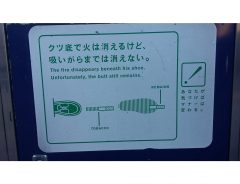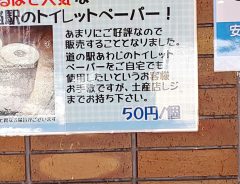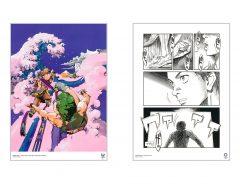
Source: © Tokyo Metropolitan Teien Art Musem | El Lissitzky, USSR / Russische Ausstelung / Kustgewerbemuseum Zürich, 1929
Only one week left to see exhibition of Constructivist posters at Teien Art Museum
Related Article
-

The discreet charm of Japan’s anti-smoking campaign
-

Live Action Fullmetal Alchemist Trailer, Posters, Reveal Homunculi And More Characters
-

Japanese train station praised for charging toilet paper fee
-

Nara’s Famous Deer Are Begging Travelers To Stay In The Area
-

Tokyo 2020 Official Posters Include Hirohiko Araki, Naoki Urasawa; Exhibition Ongoing
-

Artist Recreates Movie Posters In Japanese 70s Style, Brings Back Some Magic


Art lovers have less than one week left to see Constructivist Posters of the 20th Century at the Tokyo Metropolitan Teien Art Museum in Shirokanedai.
Posters are ubiquitous, and a key part of the culture of design in everyday life. Perhaps that’s why we rarely consider how they came to look the way they do. The exhibition is a great opportunity to see some early examples of the posters that laid the foundations for contemporary visual design.
The exhibition presents 130 Constructivist posters from Tama Art University’s TAKEO Poster Collection. They include many early experiments in combining text with photographic images, abstract shapes, and geometric designs.
© Tokyo Metropolitan Teien Art Musem | Jean-Benoit Levy, Marktblatt, 1989 © Jean-Benoit Levy ( AGI / AIGA ), Studio A N D ( www.and.ch ), Photo : Alexandre Genoud
The Constructivist movement started out in the Soviet Union in the 1920s and went on to have a revolutionary impact on art and design in the West. The emphasis was on the bold and the bright, with lots of use of abstract shapes.
While hardly a novelty to Japanese urbanites of the day, for Japan’s visual culture has always favoured simplicity over decoration, it marked a real sea change in European visual communication.
© Tokyo Metropolitan Teien Art Musem | Wolfgang Weingart, Das Schweitzer Plakat / Birkhäuser Verlag, 1983 © Wolfgang Weingart
In the field of visual design, Constructivism brought a distinctive style in which icons and text were fused with geometric, abstract forms. Numerous artists and designers embraced the new style, including El Lissitzky, Jan Tschichold, Max Bill, and Josef Müller- Brockmann. Through repeated experiments, they enormously expanded the potential of visual design.
Constructivist posters have continued to develop in many ways since the ‘20s. While not often acknowledged, they laid the foundations of visual design today, from fashion to product design and computer graphics.
© Tokyo Metropolitan Teien Art Musem | Theo Ballmer, 100 Jahre Lichtbild / Kunstgewerbemuseum Basel, 1928
This exhibition of works from the Takeo Poster Collection explores how Constructivist posters gave birth to trends in the use of abstract shapes, text and fonts that persisted throughout the twentieth century.
The exhibition is divided into three sections, charting the development of the Constructivist movement over the course of the twentieth century.
The first part traces the transmission and development of the Constructivist or International Style poster, as exemplified by the work of the Swiss School and the Ulm School, which led the way in post-war visual communication.
The second part looks at posters that symbolize Russian Constructivism, the Bauhaus, and the New Typography, which arose before World War II and went on to shape the International Style.
The third part looks at the impact of Constructivism on posters since the 1970s, in design trends like the New Wave and Postmodernism, which became popular after the International Style.
By examining the processes of generating and developing the fonts, papers, and styles used in Constructivist posters, the exhibition asks the viewer to think about what posters are and how we should view them. It also questions the significance of posters in the future, as digitalization strides ahead.
The Teien Art Museum is surrounded by gardens and early spring, when the cherry trees are in bloom, is an especially nice time to visit.
Constructivist Posters of the 20th Century runs until Sunday, 11th April, 2021. The Teien Art Museum is open daily from 10:00 a.m. until 18:00 p.m., with last admission at 17:30 p.m. Admission for adults is 1,100 JPY.
Note that the museum will be closed on April 5th. As of April 2021, the museum will be closed on Mondays.
You’ll find the Teien Art Museum at 5-21-9, Shirokanedai, Minato-ku. The museum is seven minutes’ walk from Meguro Station on the JR Yamanote Line (East Exit) and Tokyu Meguro Line (Main Gate). It is six minutes’ walk from Shirokanedai Station (Exit 1) on the Toei Mita Line and Tokyo Metro.
For more details, see the museum’s website here or call 050 5541 8600.